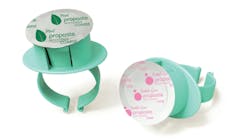by Noel Kelsch, RDHAP
Whenever I present an infection control course, I pass out a card to the audience. The card asks each audience member, "If I could say what I wanted to say about infection control to my peers, I would say:____." I have been doing this for about a year. The answers always range from hilarious to pointing out vital concepts that are being ignored. Last week, the answers provided by a group of lab techs during a lecture left me laughing.
The lab techs answered the same question about what they would say to their peers about infection control. For example:
- "Wear a deodorant, take a bath once in a while, and, for Pete's sake, wash that lab coat! It's been at least five years."
- "Spit is not a surface disinfectant, stop trying to spit shine things."
- "The reason that wax box says single use is because it is single use. Use it and throw it away. How would you like me to put that in your mouth?"
- "Please do not eat your lunch at the bench where you are manufacturing dentures. I am tired of picking the crumbs off the cases before sending them out."
As you can tell, there were some basic concepts I addressed with the lab techs.
I would like to share with you the things that your friends, teammates, and fellow employees wanted to tell you. The top five things in order of most mentioned are:
1 Wash your hands. Remember, the Centers for Disease Control and Prevention states that 88% of disease is spread by hand-to-hand contact. This simple act of washing your hands can and does save lives.
2 Do not eat or store food in the lab. Wear personal protective equipment including mask, proper gloves, and eye protection when working in the lab.
3 Change your mask. Change it anytime it is moist, soiled, and between every patient. Cover both your nose and mouth with it. Do not hang it around your neck or tuck it in your pocket, it is contaminated and potentially full of bacteria and viruses.
4 Don't come to work sick. You are sharing disease with your patients, the staff, and you are not complying with OSHA guidelines.
5 Personal protective equipment. Please do not take your lab coat to lunch or home. You need to take it off when you leave the operatory. You are inviting all the bacteria and viruses from all the patients you have seen to lunch or home with you.
Wouldn't it be wonderful if we could say what we wanted to say about infection control, and no one would be offended? It is important that we work as a team. Communication and understanding are the keys to infection control. If we can learn to work as a team without pointing fingers, we can make our environment safe for everyone. Incorporating a two-minute infection control update into the morning huddle or staff meeting can keep everyone on their toes and informed of the issues of infection control without singling out one person. (However, there will be times when direct communication with a staff member is necessary to stop an infection control issue immediately when there is a direct risk involved.)
But instead of being confrontational and saying what you wish, consider these alternatives:
• Bring your suggestions to staff meetings in a positive manner in the form of a challenge to overcome and with suggestions to solve the problem.
• Address the problem and not the person. When going into the staff meeting, do not say, "Jessica is eating in the lab." Instead state the problem and the solution. "OSHA guidelines direct us to eat in the staff lounge and not the lab; let's make sure we are all complying with those guidelines."
• Give everyone some part of ownership in the solution. During the staff meeting, ask everyone if they have any suggestions to ensure a smoother compliance with a solution.
• Focus on the solution and not the problem. Bringing the solution into the room instead of the problem gets rid of the blame. This allows everyone in the scenario to see their piece in the solution and move on to the solution.
• Divide the task to resolve the problem. Once the solution has been agreed on, review the tasks that will be performed and who will be performing them. Have clear guidelines of how the problem is to be solved and the role of each staff member involved.
Saying what we need to say about infection control is vital. Doing this in a team-building environment without pointing fingers allows us to help keep each other out of harm's way and ensure safety in the work environment.
About the Author
Noel Brandon Kelsch, RDHAP, is a freelance cartoonist, writer, and speaker. Noel's cartoons can be seen in RDH magazine and her articles have been published in both dental and nursing trade magazines, as well as books. She has received many national awards including Colgate Bright Smiles Bright Futures, RDH/Sunstar Butler Award of Distinction, USA magazine Make a Difference Day award, President's Service award, Foster Parent of the Year, and is a five-time winner of the Castroville (Calif.) Artichoke cook-off! Her family lives in Moorpark, Calif. She can be contacted at [email protected].





